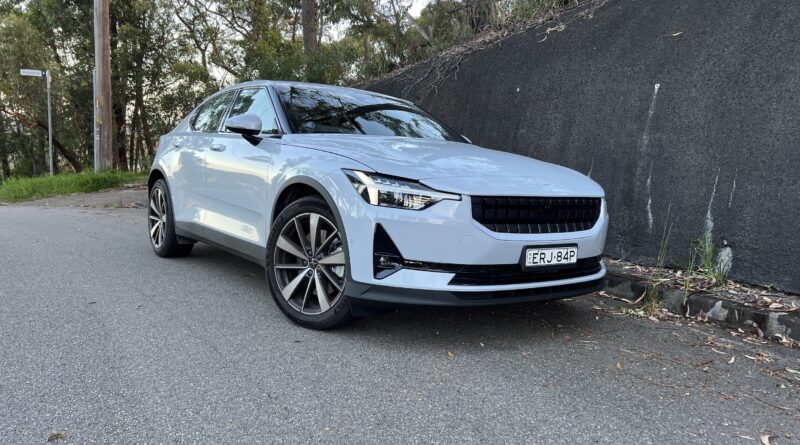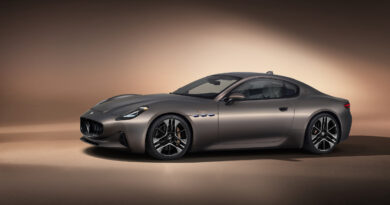Polestar 2 Long Range Single Motor long term review
Taking delivery: What to expect
Update 1: The start of our 5000km journey in a new EV
We’re living with a Polestar – and not just for a week, as is the case with most of the cars we test for EV Central.
For this test we’ll be living with a Polestar 2 for months. It gives us a chance to delve into its efficiency and liveability, the things we love and the things we’re not so keen on.
We’ll be taking detailed stats and updating this story regularly to chronicle our time with the first model from the second EV-only brand in the country.
READ MORE: Polestar 2 pricing confirmed, newcomer to take the EV fight to Tesla Model 3
READ MORE: Polestar 2 updated with fresh wheels, colours; prices increase up to $4000
The car we’re testing is a Polestar 2 Single Motor, which comes with heated front seats, a partially powered driver’s seat, electric tailgate, auto emergency braking and speed sign recognition.
It’s running on the standard 19-inch wheels and tyres (we’ve got a 2022 model; 2023 models are getting a minor update to their wheels) and is white (the colour is called Snow and it’s an extra $1500).
But our car also has the larger battery pack, taking the claimed overall capacity from 69kWh to 78kWh (the usable capacity is about 75kWh).
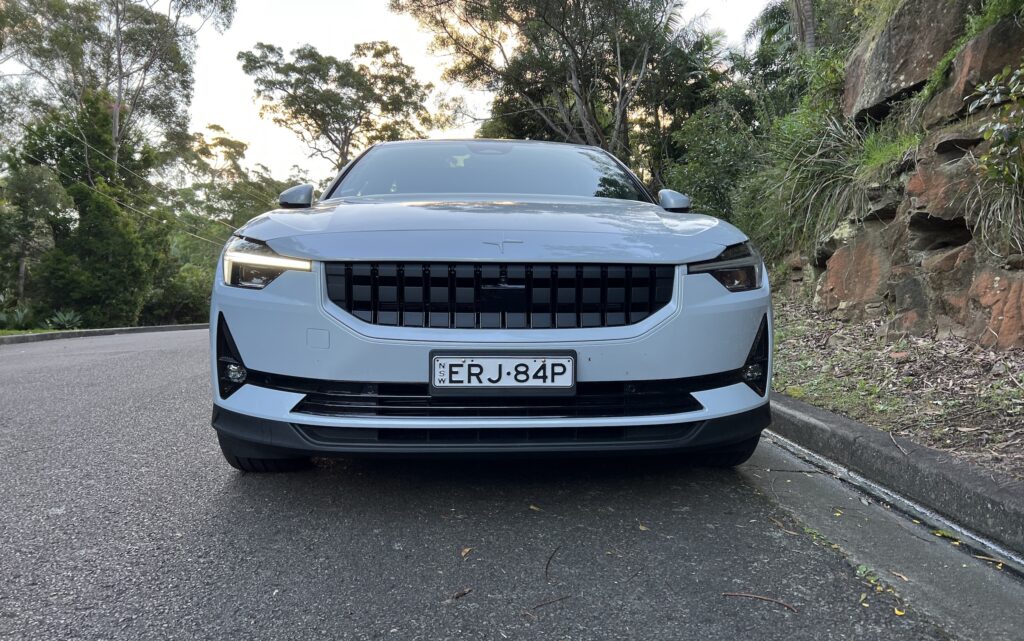
Our car also has some option packs, including the Plus Pack ($6000) that includes a 13-speaker, 600-Watt Harman Kardon sound system. It includes two subwoofers (one near the driver and the other in the back left corner of the boot), a centre speaker and four tweeters (one in each door).
The Plus Pack also incorporates a wireless phone charger in case you don’t want to use the two pair of USB-C plugs. Plus there’s a heat pump for improved efficiency, a panoramic sunroof and heated rear seats to complement the heated seats up front. Instead of leather there’s also a seat material Polestar calls WeaveTech; it has a terrific feel and looks modern and classy.
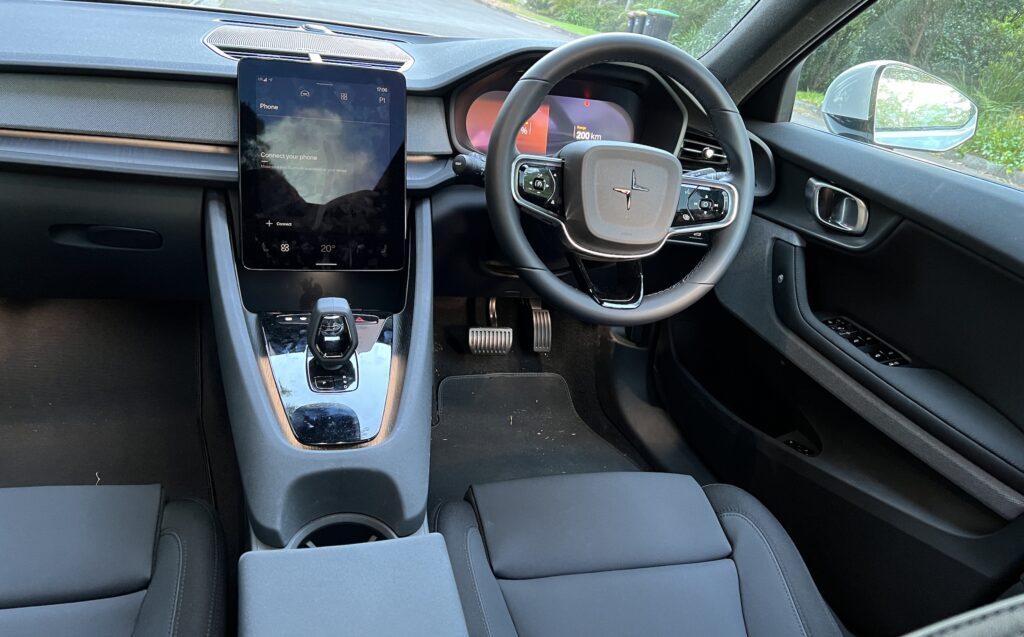
Our car also has the Pilot Pack, which has since been rebranded as the Pilot Lite pack ($3400) because it misses out on the matrix LED headlights. Pilot Lite includes a 360-degree camera, blind spot warning, rear cross traffic alert with rear auto braking and lane keeping steering assist.
You could argue some of those features should be included as standard in the Polestar given it’s competing in the luxury market.
But, equally, Polestar has managed to keep the price relatively sharp by EV standards.
When we started doing this test the Polestar 2 price started at $59,900 plus on-road costs. It’s since increased to $63,900 for the Standard Range car or $68,400 for the Long Range version we’ve tested here. That makes it cheaper than its prime rival, the Tesla Model 3 Rear-Wheel Drive ($65,500 plus on-roads) and more affordable than the Hyundai Ioniq 5 and Kia EV6 it in some ways competes with in the sexier side of the EV market.
Throw in our two packs – Plus and Pilot – and the price of our car is $77,800 before on-road costs (plus $1500 for any colour other than the standard silver, called Magnesium).
Another thing we’ll be putting to the test is the Android Automotive operating system. It not only controls smartphone connectivity – working with Apple and Android phones – but also other major functions of the car. Basically it controls the entire 11.2-inch infotainment screen (arranged in a portrait configuration, rather than the more common landscape layout). There’s also a 12.3-inch digital instrument cluster.
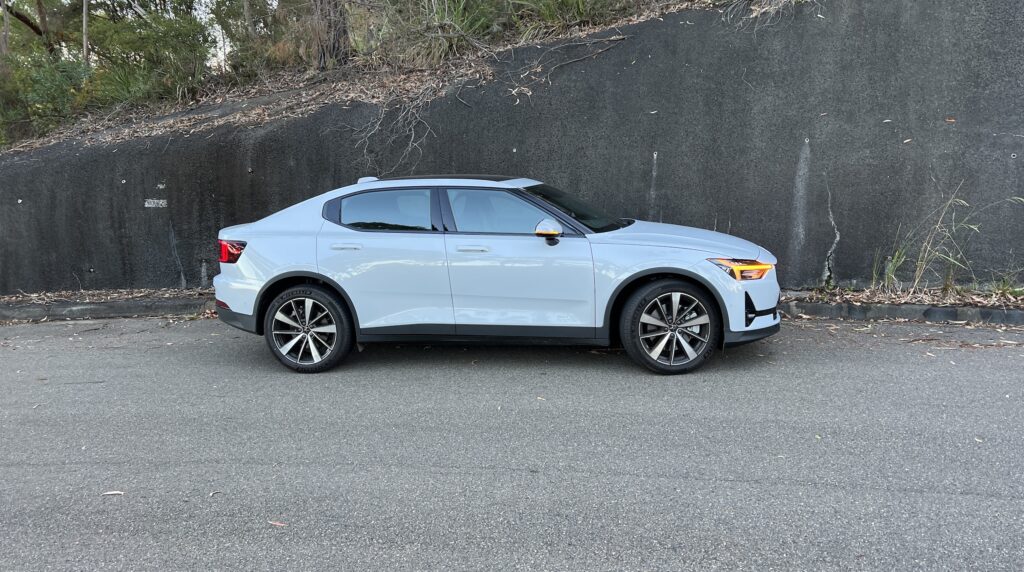
One thing we won’t have to worry about during our few months with the Polestar 2 is servicing. Polestars call for servicing every two years and the maintenance for the first five years and 100,000km is included in the price. The warranty covers five years with no limit on the kilometres travelled.
The high voltage battery is covered by a separate eight-year warranty that is capped at 160,000km. Polestar guarantees at least 70 percent of the original battery capacity will be available after that time. The company recommends charging to 90 percent most of the time (as with many other EVs) unless you need the full charge. There’s a setting in the main screen to limit the maximum charge to a pre-determined limit.
First impressions of the design are good. We’re fans of the overall sportback-esque silhouette, which is capped off by great LED lighting front and rear. Some of the detailing is also good, from the frameless mirrors to the upmarket cabin with its clean but functional layout and high quality finishes.
As for the basics, the Polestar 2 gets a single electric motor driving the front wheels. Maximum outputs are 170kW and 330Nm and it’s claimed to hit 100km/h in 7.4 seconds.
The peak AC charge rate is 11kW, which means a full charge in as little as eight hours if you’re using a home wallbox.
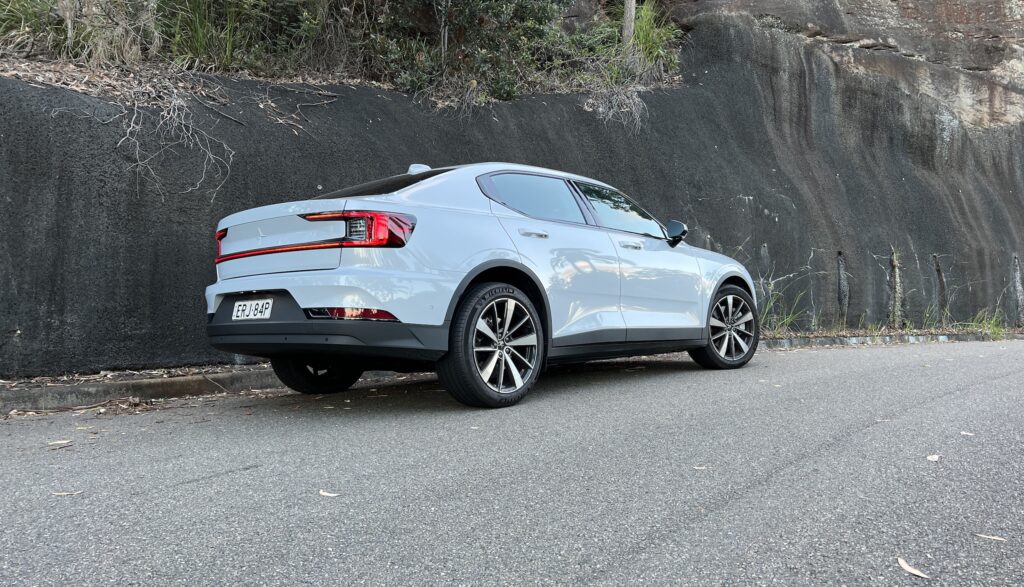
Faster DC charging can be done at up to 155kW and Polestar claims a 10-80 percent charge can be completed in as little as 35 minutes.
The WLTP range of our model was initially quoted as 540km, but that’s since increased to 551km – the highest of any of the three Polestar 2 variants.
Polestar 2 Long Range Single Motor specifications
Price: $68,400, plus on-road costs
Basics: EV, 5 seats, 4 doors, compact liftback crossover, FWD
Range: 540km (WLTP)
Battery capacity: 75kWh
Battery warranty: 8 years/160,000km (guarantee of 70 percent of original battery capacity)
Energy consumption: 17.1kWh/100km (WLTP)
Motors: 1 front, 170kW/330Nm
AC charging: 11kW, Type 2
DC charging: 155kW, CCS
0-100km/h: 7.4 seconds (claimed)
Taking delivery of a Polestar: What to expect
Our Polestar 2 was brand new when we picked it up. But we didn’t go through the regular customer delivery process. Instead, we collected it from a facility that handles vehicle logistics for media evaluations.
However, a friend recently took delivery of a new Polestar and gave us the rundown of what it was like.
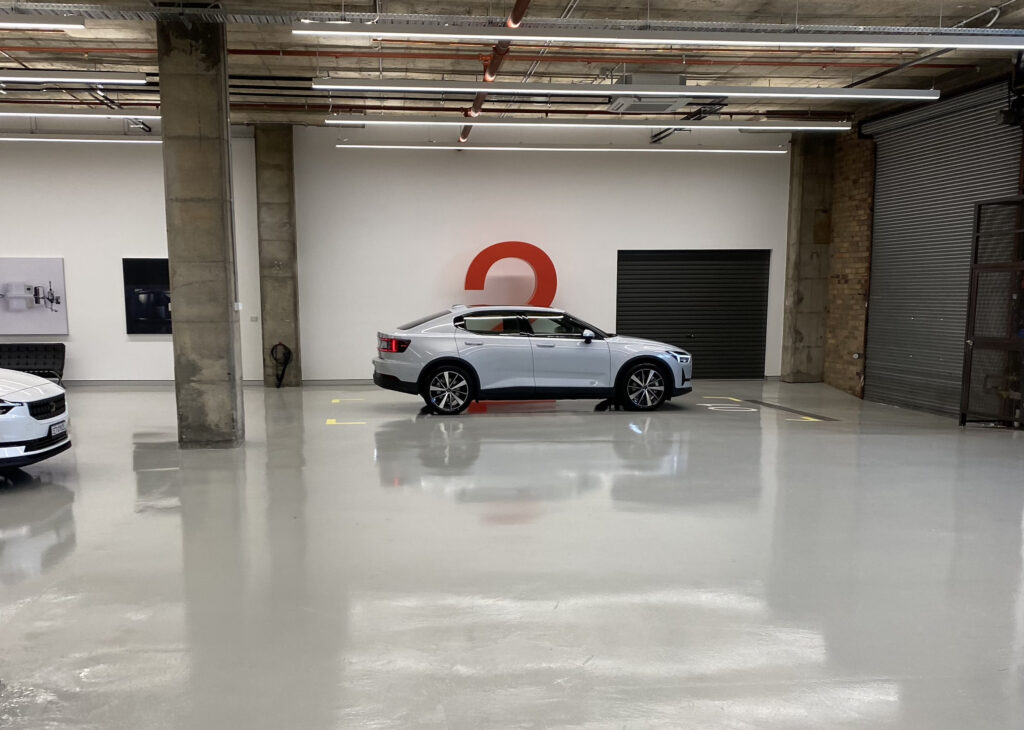
It sounds very similar to the Tesla delivery process, which we have experienced.
Rather than a swanky showroom, the car is handed over in a warehouse and, coincidentally, the Sydney warehouse isn’t far from one where Tesla delivers its cars.
Pictures show it’s all very warehousey, although the floors have been painted white to snazz it up a bit and there’s loads of strip lighting on the roof to keep things bright and make the cars glisten a little more.
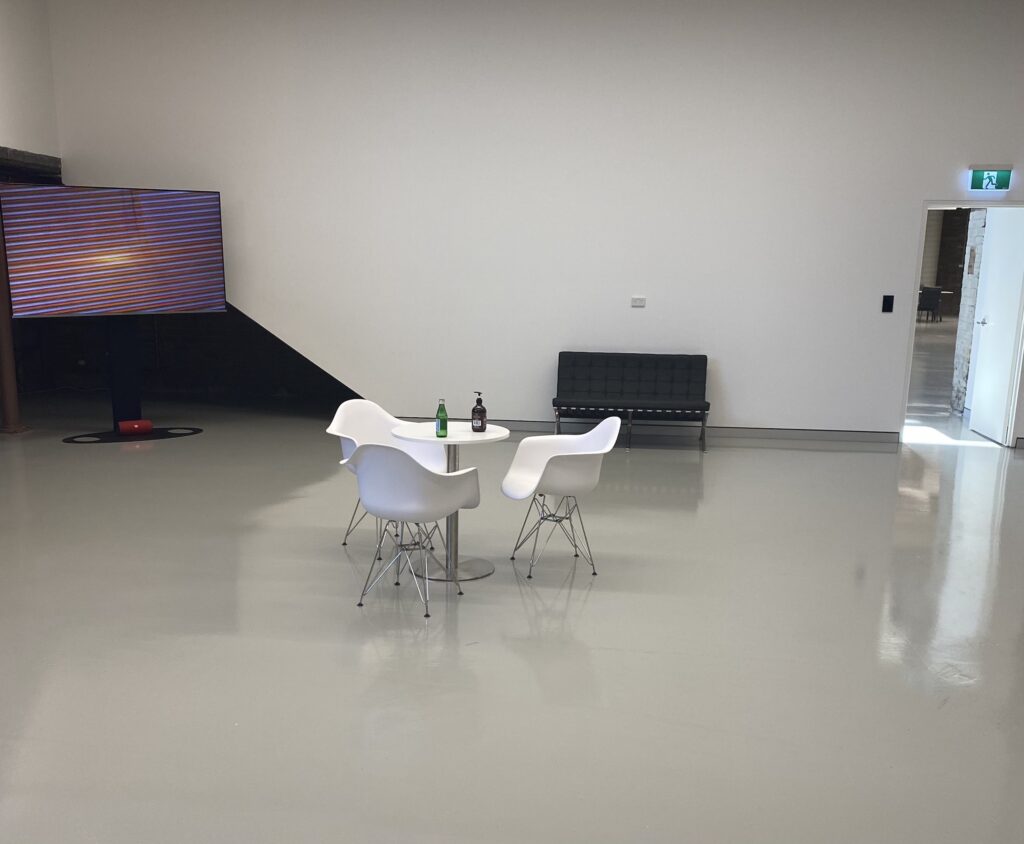
There’s also a small waiting area with drinks available. It’s in that waiting area where customers are given an initial rundown of their new car.
The rest of the warehouse has a load of Polestar 2s as well as one area where the final handover takes place.
It’s all fairly informal and about the process of getting you behind the wheel rather than wowing you with car covers, bows and whatever else dealers like throwing at a new car to make you feel warm and fuzzy.

But there is plenty of time to get familiar with the controls and settings. That is one point of difference with Tesla; it appears Polestar staff are happier to sit with you for longer and make sure you’re familiar with how everything works, whereas with Tesla you get links to videos and a very quick configuration of your setup.
Either way, the report we received suggested the Polestar delivery process is efficient and informative without the swankiness of a showroom.

